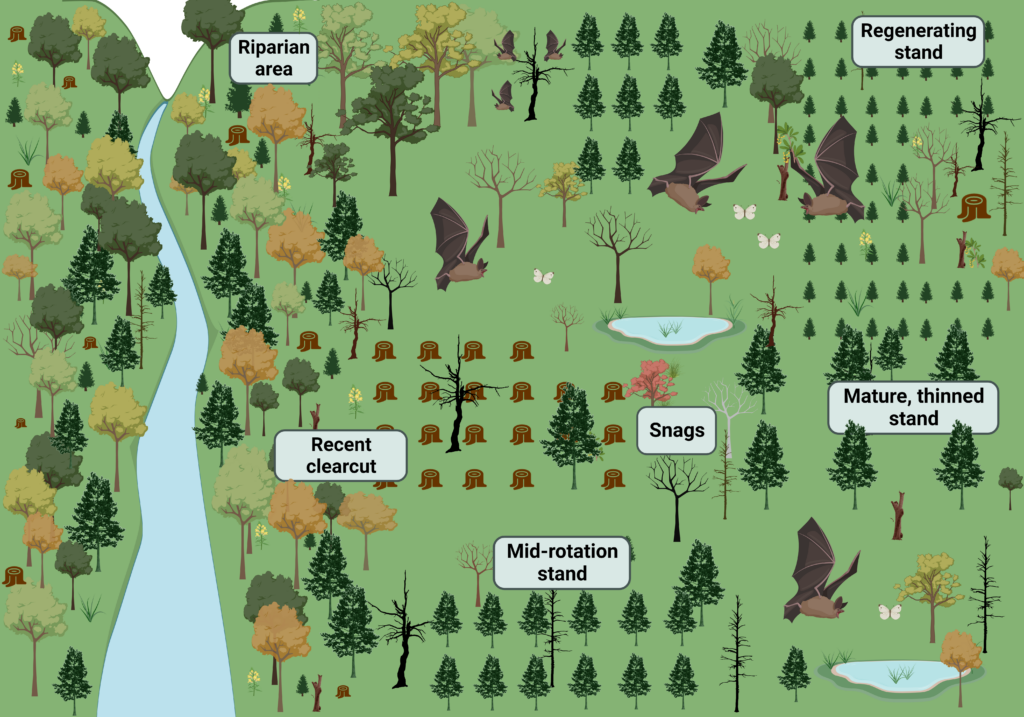Forest Management Considerations for Bats in the Eastern United States (FS-23-02)
Authored by Angela Larsen-Gray, Ph.D., Darren Miller, Ph.D., Kevin Solarik, Ph.D., and Erik Schilling, Ph.D.
Click to download: Forest Management Consideration for Bats in the Eastern US 11-23
Bats are the second most diverse group of mammals, with more than 1,400 species worldwide. The 19 forest bat species in the eastern United States face many threats, from wind energy turbines to habitat loss from land use change, primarily urbanization. However, for bats that hibernate in caves or mines, white-nose syndrome (WNS), an introduced fungal disease, has been the overwhelming cause of severe population declines, greater than 95% for some species. White-nose syndrome has been especially devastating to four bat species that depend on eastern forests; little brown, northern long-eared, Indiana, and tricolored bats. The good news is that, at the landscape scale, forest conditions and forest management are not limiting for these species. Further, many forest management activities can improve roosting and foraging habitat for bats.

Keywords: Forest Management, bat, foraging, roosting, riparian area
